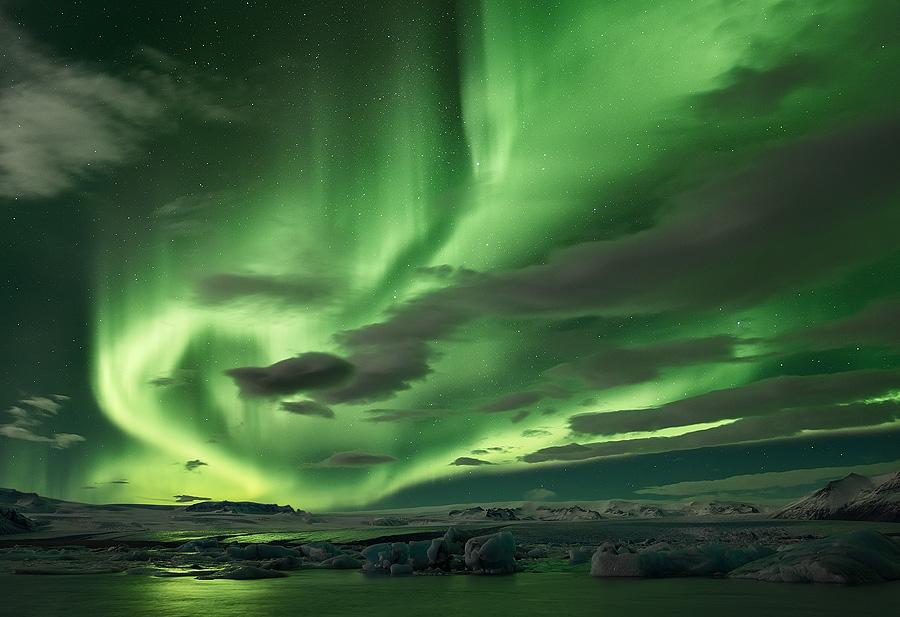The aurora borealis lights up the Arctic night skies. Also called the Northern Lights, the phenomenon is the result of beams of charged particles tracing along the Earth’s magnetic field and entering the atmosphere. When they collide with oxygen and nitrogen in the atmosphere, the gases glow green, red and blue depending on the beam energy.
While stunning for observers on the ground, aurora can cause problems for satellites as they orbit the Earth, along with all the technologies that rely on them. The aurora is accompanied by large electric currents that flow invisibly in the upper atmosphere, increasing the temperature around the aurora from about 260F (125C) to 980F (525C). This heating causes the thin upper atmosphere to expand, changing the slight drag on satellites and thereby shifting their orbital motion over time.
This satellite drag is the limiting factor on how far into the future one can predict a satellite’s position. Satellite operators are continually looking for better models of satellite drag so they could plan further into the future and preserve the precious fuel necessary to correct satellite orbits. The key to prediction is an understanding of the energy input during an aurora display.
There have been maybe a hundred or so rockets launched into the aurora over the last 50 years to measure its energy flow. But those missions only took single measurements at the points where a rocket passed over the aurora. Our recent Auroral Spatial Structures Probe mission took a whole new approach to try to answer questions about the voltages and current surrounding the aurora and how they change over time.

